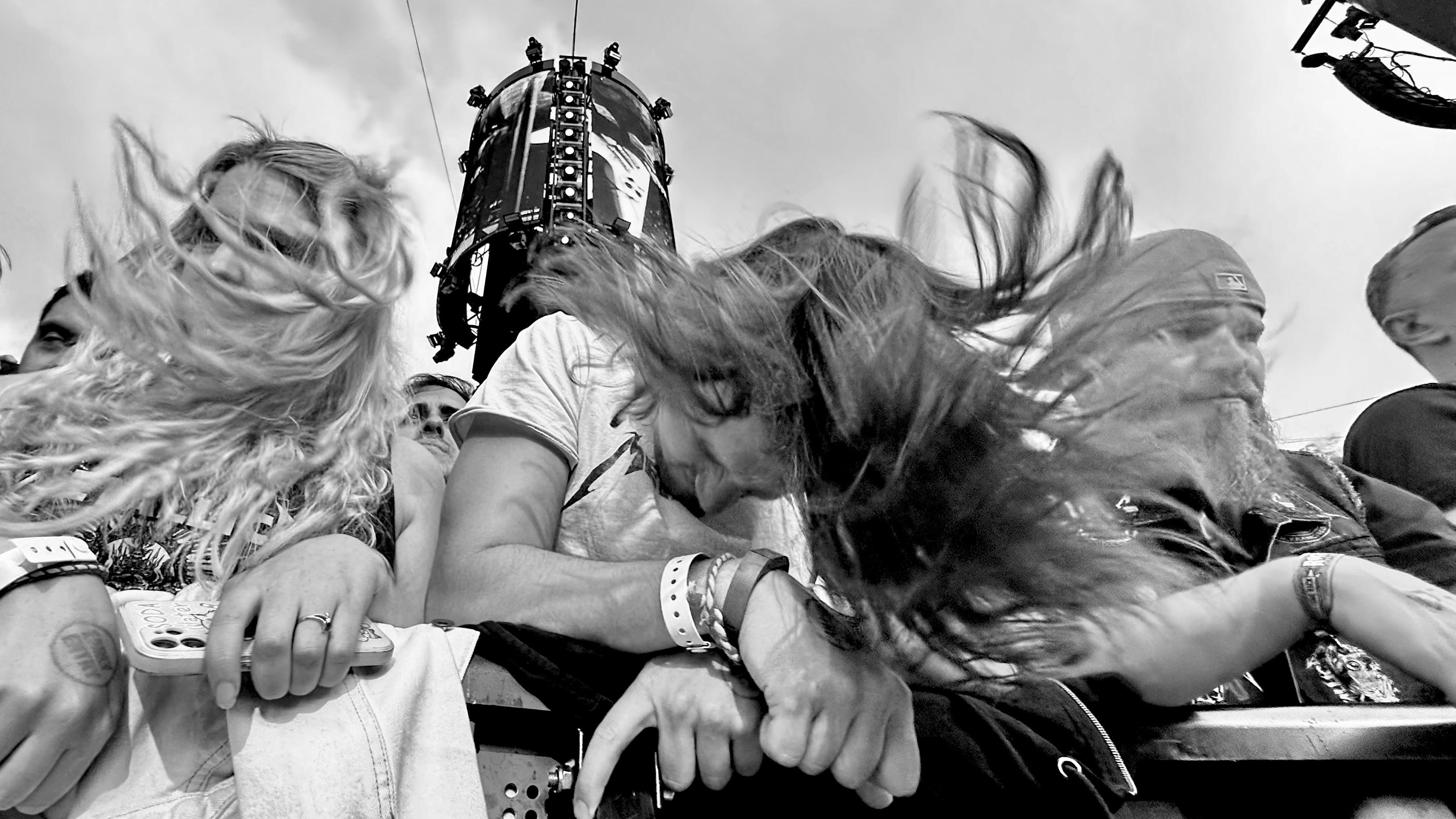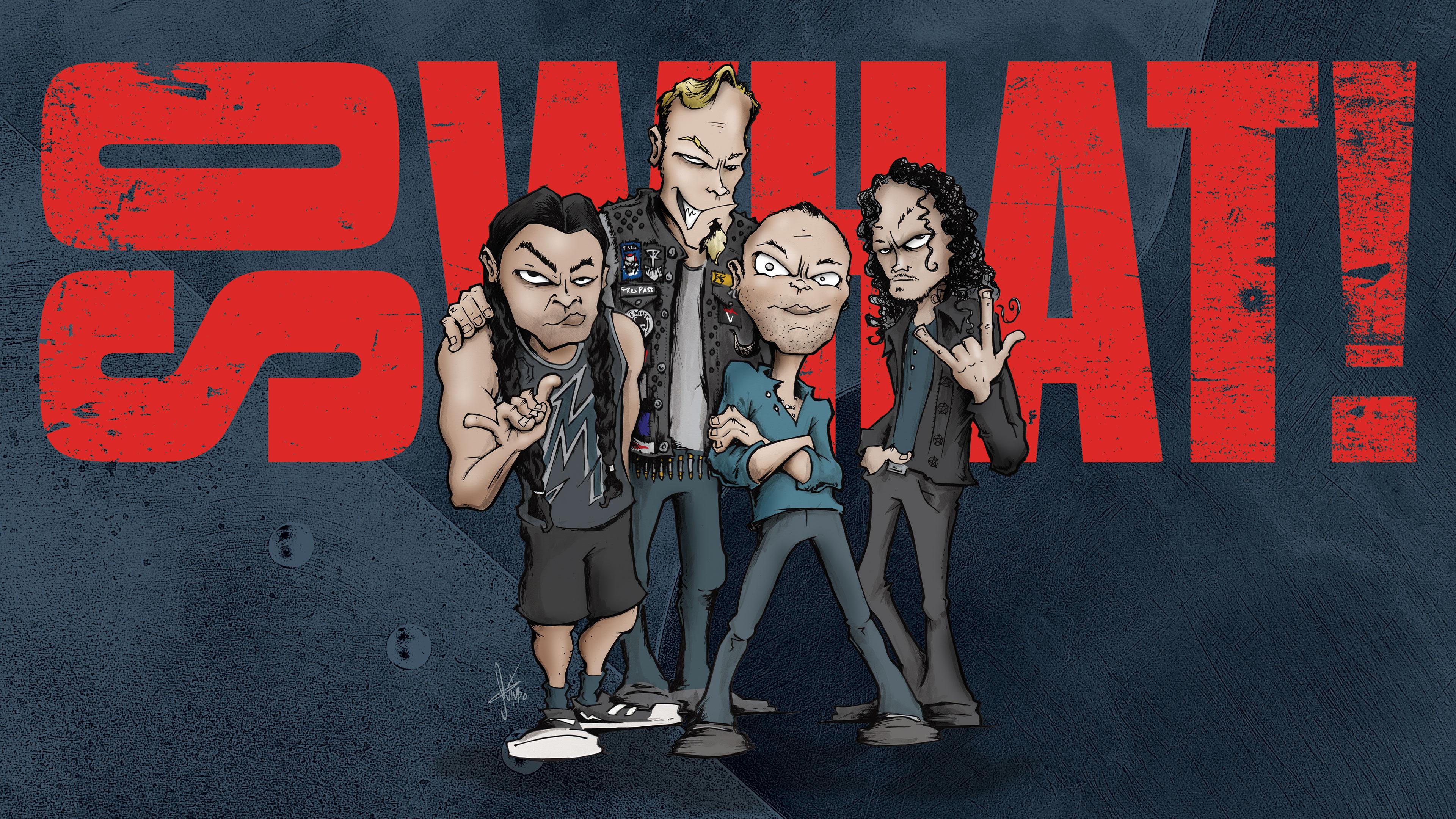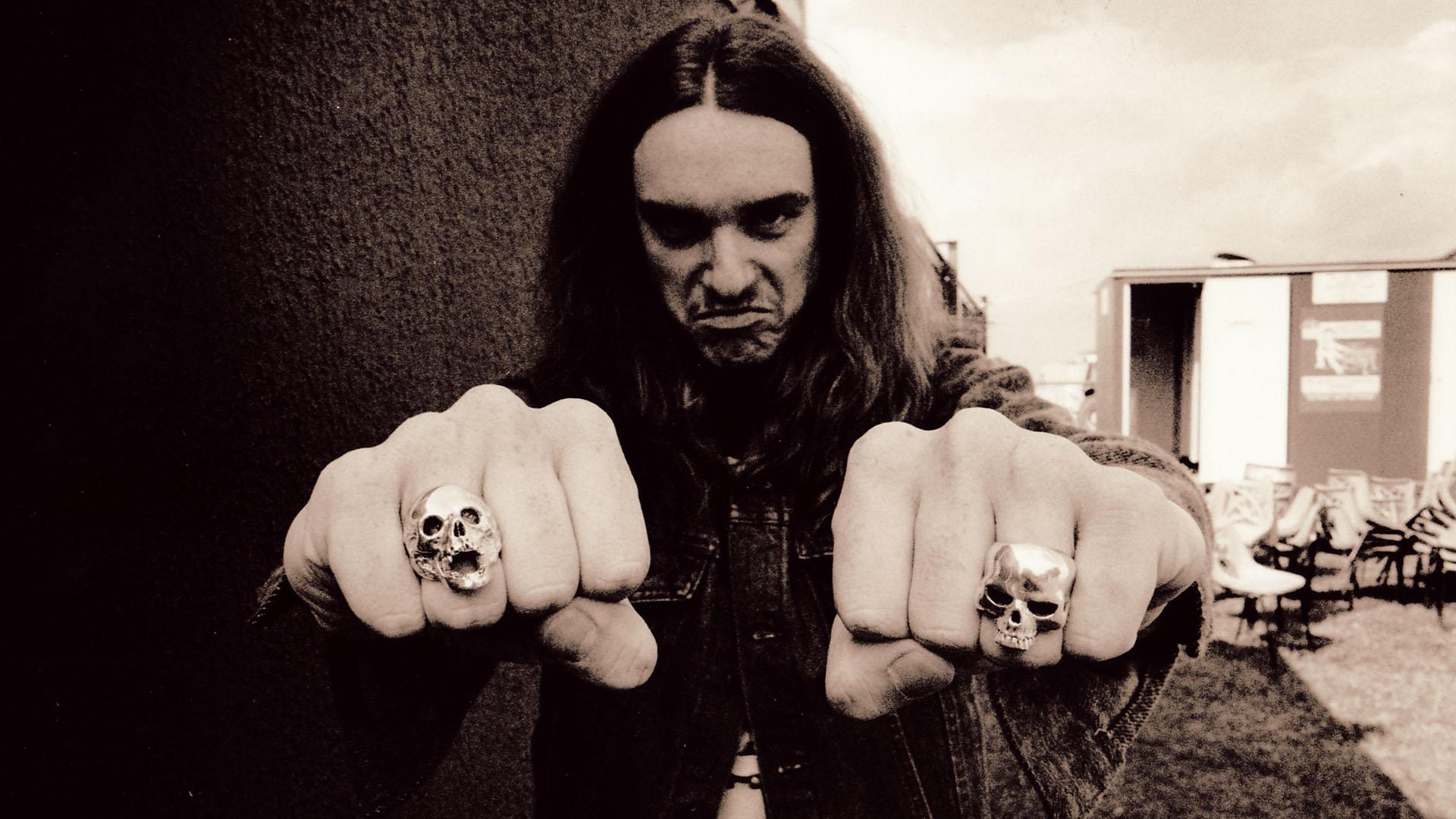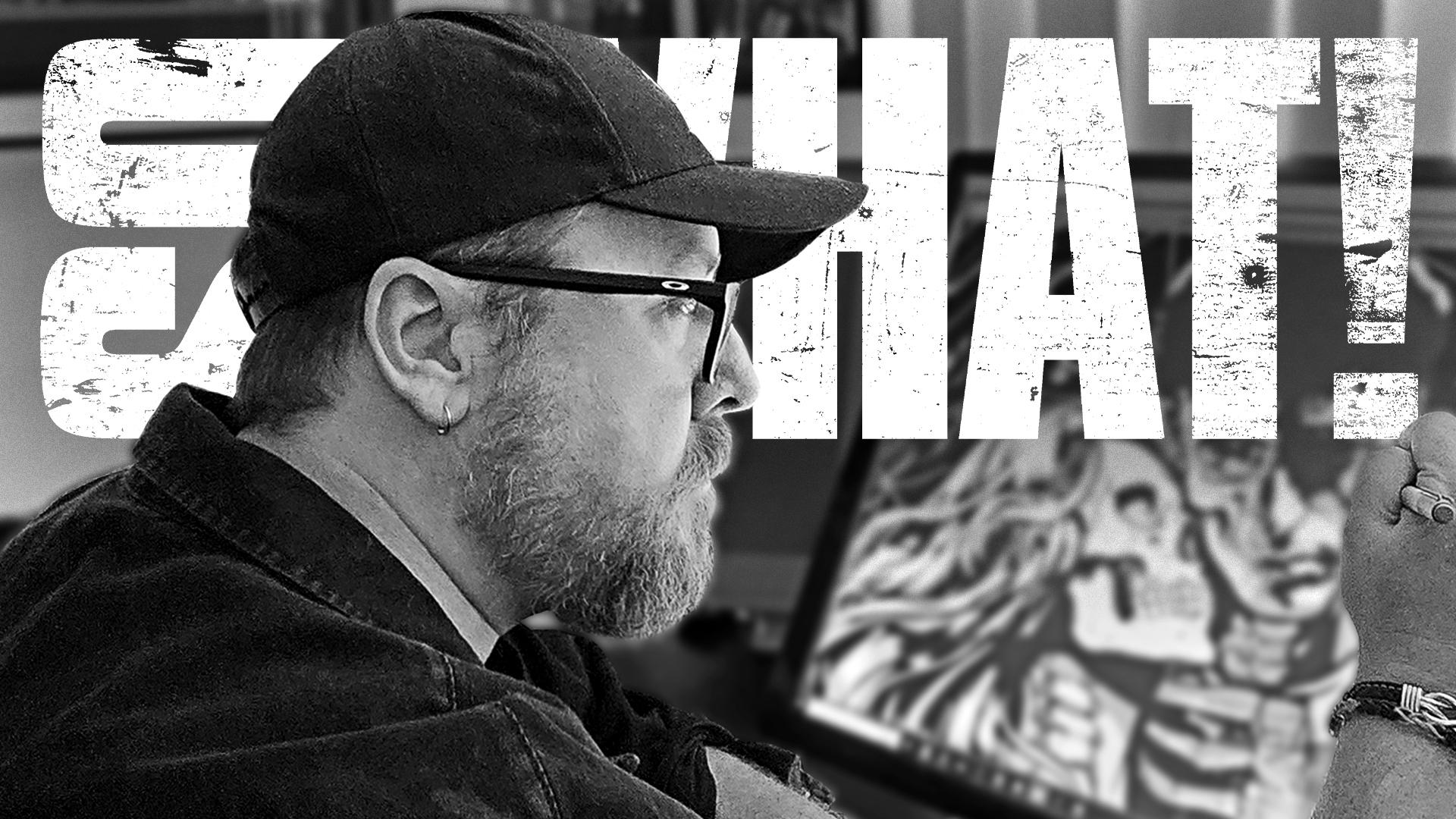
Mar 16, 2018
From Doncaster To Drones - A Chat With Tara Boughey
When you meet Tara Boughey, you find yourself first pondering how fresh-faced and youthful she looks in an industry which puts crow’s feet around baby’s eyes within a week. There is also her resolute sense of pride, purpose, and enjoyment in what WorldWired life is bringing her, Boughey clearly enjoying the various challenges her job throws up daily. From the outside, it would appear that someone in charge of how the “Moth Into Flame” drones perform would have to be a “drone expert.” Indeed, I had visions of Boughey having been a committed video-drone addict in her earlier years, amassing years and years of gloriously geeky know-how. Not quite. In fact, I believe Tara Boughey’s story to be one of the more inspirational in terms of using sheer curiosity, in conjunction with bravery and talent, to forge the life and career she has.
Steffan Chirazi: So, you’re from Doncaster in the UK where I would say that drones are probably not a particularly common feature of Yorkshire life. So if you can, paint a picture for the readers as to how a young lady from Doncaster gets to be operating drones.
Tara Boughey: I started off finishing secondary school [high school] and I was accepted to universities to do a number of different things. I didn’t actually know what I wanted to do, so I decided not to spend that money if I didn’t know what I was going to do and took some time off. I went to Amsterdam with my boyfriend at the time and I started working for a video company based there. So I started off as the office manager, doing taxes. While there, I would get bored about 1:00 pm every day and decide to go into the warehouse and learned how video panels worked. I got my forklift license and things like that…
SC: You just casually got your forklift license.
TB: Well, I was signing everyone else [up] for their license[s] and I said to my boss, “Can I do it?” My general way of getting along in life is asking questions and learning things. No one ever offers to teach you anything so unless you ask. So, from there I worked for another video company in Australia…
SC: Did you move to Australia? Amsterdam to Australia?!? If you don’t mind me framing this, and again not to be ageist about it, but you seem to have got a lot under your belt at-
TB: I’m 26.
SC: That’s amazing.
TB: So I moved to Australia when I was 20. My boyfriend’s Dutch visa ran out because he’s Australian, so we went back to Australia. Yeah, [he’s] the same one who I’m now married to.
SC: Great, can we give him a name-check?
TB: Yeah. His name’s Todd Vernon. He’s a project manager at TAIT.
SC: Great, all right. So okay, marching forward through Australia. And so you’re working for a production company down there?
TB: Yeah, another video company down there, and then I got a job offer to work as a freelancer on the London 2012 Olympics.
SC: Oh, wow. Brilliant.
TB: So I went, came back to the UK, lived just in London actually. It was a nice, easy train ride to Stratford [the Olympic Stadium site – Ed] so we lived there for a year, and I did the show. That was a good seven months of my life loading that in. And I did the pixel tablets, the seats, beds, and the umbrellas.
SC: Where had you got your grounding to do that pixel work? Because this is a big deal, right?
TB: My old boss, the one who hired me in the first place with no experience at all, her name’s Carol Scott. She now works for TAIT. I guess she saw something that she liked in me, and she was all for pushing women further in the industry. She was able to do it, she saw how keen I was, and she offered me the job on that.
SC: So this goes back to what you were saying about being somewhat inquisitive, [plus] you sound like you have an old school ethic towards work and learning and so on?
TB: Right. My mother was a science teacher. She decided to go to university when she was pregnant with me and [already] had two kids age five and seven. She did three years of university with a five, a seven-year-old, and a newborn. And my dad used to be a mechanic as well, so I’ve always been mechanically inclined. He was not afraid of showing us manual labor. It would be gardening work or anything like that, all for the family, and I appreciate that upbringing immensely. And as you can see, I do a lot of computer work now; it’s not very heavy, but in terms of doing a load in and load out, and how you come across to local crews...
SC: We’ll get into that for sure because I’m interested to know how that interaction is.
TB: Yeah, it was more interesting on the Olympics when I was 21 years old and I had 20 guys, local crew, to direct on my own, no other crew around me. And that was trial by fire.
SC: Yeah, I suppose we should just be blunt. You’ve got a double barrier. You’re young and you’re a woman dealing directing these crotchety old bastards.
TB: Who don’t really appreciate a 21-year-old woman telling them what to do, so I used to lie about my age. I used to say I was older because I knew I’d never be taken seriously if I told them my real age. So I was 29!!! I’d completely lie about it and just kind of earned a bit more respect that way. I’ve [also] done odd jobs in between, I’ve done telemarketing and I’ve worked for a brewery in between stuff, [and] I think that kind of thing makes me really good at customer service. I think it helps me in reading a crew straight away. For sure I can see if they’re either uptight that I’m a woman, or they think they’re gonna joke around. I kind of go off what signals they give me, like a customer would, and that helps me.
SC: Going back to the small matter of working on the Olympics, could you just break down exactly what you were responsible for on that project?
TB: Video processing and building the system. Pixel tablets [formed] the largest pixel tablet screen in the world [a stadium-wide video surface utilizing the crowd – ED]. It was 70,000-ish pixels.
SC: So that was you?
TB: No. I was building the system.
SC: Right. But still you gotta plug in the right thing in the right place, right?
TB: Yeah, it was one “tablet” per seat in the Olympic stadium [each tablet containing nine pixels] and [you] could pick it up and wave it around.
SC: It’s crazy.
TB: It’s like a moving image. At that time I didn’t know a lot more than, “Hey, take this.” I was more of an “educated local”. My head of video was a guy called Stef Vanbesien. And he was great in teaching me whatever I wanted to know and I was obviously still new to the “show” side of things, dealing with local crew personalities and things like that. He was very, very good at [looking out] for me.
SC: Yeah, you usually need one person who will mentor you through, or one or two people to guide you through some rocky waters.
TB: If you don’t, I think you kind of sink regardless of how good you are. I think you need at least one good person to believe in you and say yeah, you’re worth it, just keep going.
SC: Okay… let’s talk about these drones and let’s talk about what it takes and what it took to get them going.
TB: I do a lot of subcontracting work for TAIT; I was more recently the head carpenter for another tour and I had just got home when TAIT said that they needed someone to meet the drone vendor, because they hadn’t got someone to run the drones yet. It was just meant to be for the afternoon that I helped them out with hanging modules and setting up the room for the system. And my boss Kilty was like, “Do you want to come and run drones?” Just like that. And I was like, “Yeah, sure.” I get offers like all the time that never come through to fruition. So I’m kind of just a bit blasé about it… two days later I’m on the phone sorting out a deal.
SC: And again, I mean you’re stepping into this with no prior experience of running drones, right?
TB: None. I didn’t even own one.
SC: Can I ask you the six-cent question? When you were negotiating to take a job running as the drone operator, is that something you let people know? Or is there already a trust, “Well, if she’s up for this gig, we trust that she’s gonna know what she’s doing?”
TB: It’s brand new technology, so drones have never properly toured in this magnitude before. They’ve had big drones with cameras and things like that but in my tenure, it’s never been live.
SC: So nobody’s done it.
TB: No one’s done it. It’s the first autonomous drone tour ever.
SC: So the choreography is not yours. It’s choreographed for you?
TB: Yeah.
SC: So you have to make sure that it sticks within the parameters of the stage, right? Bring people through how that works. I’ve seen you putting little tiny numbered stickers on these drones, and I presume these are also sensors you’re putting on them, right? I don’t know.
TB: No, the little stickers are literally the ID numbers of the drone. Number one will have a set choreography that it does. They all have their own choreographies. And it’s kept within the system; I have 28 modules around the stage, under the stage, on the cubes and in the air on a “chandelier” [in layman’s terms, the modules are perimeter-setters beyond which the drones cannot go, thus keeping them over the stage only – ED]. They’re all sending out signals telling the drones what to do all the time.
SC: So you’re operating all of that from one computer.
TB: Yeah.
SC: Okay. My ten-cent question is you must have a backup running at all times, right?
TB: Yeah, I have. So if one module dies then it’s fine. If two die, then I wouldn’t fly them. But I have an e-stop main and an e-stop backup. In case I need to abort at any point in time, I can hit that. If that one module dies, the main or the backup, the other one will take over. So there is a redundancy there. I can get away with one module dying, but if two die, I don’t like to risk it.
SC: Have you had a situation yet where they’ve all shut down?
TB: No. I’ve aborted one, one time early. But apart from that, no.
SC: Do you have any input into the choreography now at this point? Given that you’re the person who’s out here and you’re the one who’s seeing how it works?
TB: No, it’s literally all done with code from the vendor and obviously [show designer and director] Dan Braun’s input of what kind of visuals he wants to see and they talk to each other for that. I load the choreography that they tell me. We’ve done a couple of different ones. But the one that we have now are all white lights and it’s all the different shapes that you see.
SC: Do you want to get into choreographing these things? Well, first of all do you think that the technology is there to support bigger use of this kind of stage thing? I mean can you see different types of drones?
TB: Yeah. I mean they’ve done bigger ones before. They did it with Cirque du Soleil in New York, they had eight big drones that have lamp shades on them and they’re this big rather than this big [gestures the size of drone – ED], which would hurt if they fell on you, whereas mine wouldn’t.
SC: Despite Kirk’s crash helmet in Copenhagen, you remember that? When he was wearing his crash helmet?
TB: He took his revenge when he hit one with a guitar!
SC: Did he?
TB: He did. He hit one with a guitar.
SC: Was that like watching a member of your tribe getting hurt?
TB: Not at all. I found it hilarious!
SC: Good… and you’re cutting off this weirdo (me) like, “No, I’m not fucking emotionally involved with my drones. I’m not going for that.”
TB: They’ve got too much personality and sass about them for me to like them in any way.
SC: Uh-oh. She’s seen them as “evil.”
TB: They are evil.
SC: Really?
TB: Occasionally.
SC: What’s the worst thing that can happen with the actual drones? What’s the worst thing they can do?
TB: I can lose them. That’s the worst thing.
SC: Lose them?
TB: Into like the crowd, who take them and never give them back. That’s the worst thing. It’s happened a couple of times.
SC: What, people reach up and try and grab one?
TB: No, it’s-
SC: One goes rogue?
TB: Yes. If they [the drones] don’t face a certain way, and because it’s dark under the stage if someone’s bumped one and it’s not facing the correct way, it doesn’t know where it is and kind of goes, “Fuck it.”
SC: Wow. So this is really finely, I mean it’s even more finely calibrated than we think. They have to be facing the right direction under the stage or else they’re completely thrown?
TB: Yeah. The antenna has to face a certain truss for it to know where it is, which isn’t ideal for me, but…
SC: Madness! Is there a moment during the show at which you’re like, “Okay, I’ve done what I can do right now, it’s gonna be what it is?”
TB: I’m always checking. The one time that I went outside to give my brother a pass, I came back and my screen went red [for the record it was early enough on gig day that no harm was done – ED]. So it’s never out of my head that things are gonna go wrong, and until I hear “…Flame” it’s…
SC: What happens when your screen goes red?
TB: I have to restart everything and have a look at if there’s any signal interference.
SC: How long does that take, just to give us an idea?
TB: As long as it takes, how long is a piece of string? Like, sometimes it will be, “Close this program and then it’ll be fine.” But one show we had was not that. I was fixing it up until the show.
SC: But once the show’s started, okay, it is what it is. This is where we’re at.
TB: It is what it is. I can pause it. I have done that before, if I can see that the show isn’t gonna go well. I can see the status of every single drone on my screen: whether they’re taking the choreography or not, if they’ve had battery issue, if they’re aborting early, like rejecting takeoff. I can see all of that on my screen…
SC: So it’s like being a flight controller.
TB: And it’s hard because 100 still don’t fit on my screen this way, so I have to scroll.
SC: Oh, no, that’s a bit crap. Errr, my answer being [a] bigger screen. It can’t be that easy.
TB: No, it’s not a bigger screen. They’ve never had that many drones before this show. I think the most they’d ever flown at one time was 30. So this is more than three times [that].
SC: And you should give us the official number of drones again?
TB: I have 99 flying.
SC: Ninety-nine. And that is the most arbitrary… I mean not 100.
TB: Not 100. I don’t know why. The choreography is set to 99.
SC: All right. Do you think now that, given that this is a new “technology” for touring – you came in when it was new and you hadn’t done it, but now you have done it and it isn’t new anymore and you know how it works – do you think this is going to be the career path that you’re going to follow? Because I’m sure you’re getting offers, right?
TB: I’ve known of a couple of other tours that have wanted to use them. They haven’t confirmed yet. Obviously I’m on this now for a long time, so it hasn’t come up yet that I do any more drones. I’m always happy to teach someone else how to do it [too]…
SC: But in your mind, is it a career path you’d like to follow?
TB: No, the last gig I did [before this] I was head carpenter; I wasn’t “automation” at all. So this is the first touring gig where I’ve been automation. I will always keep bouncing. I’ve got ambitions that I still want to fulfill and everything like that. But I doubt I will stay in drones forever.
more...
-
Band
-
July 23, 2024
Who My Cliff Burton Was
read moreSo What!'s Steffan Chirazi looks back at his personal relationship with Cliff Burton.Band -
April 15, 2024
Andrew Cremeans' 72 Seasons
read moreAndrew Cremeans has created a haunting new piece for the 72 Seasons poster series. Here, he explains its motivations and meanings, plus what his own 72 seasons were like.Other Artists


